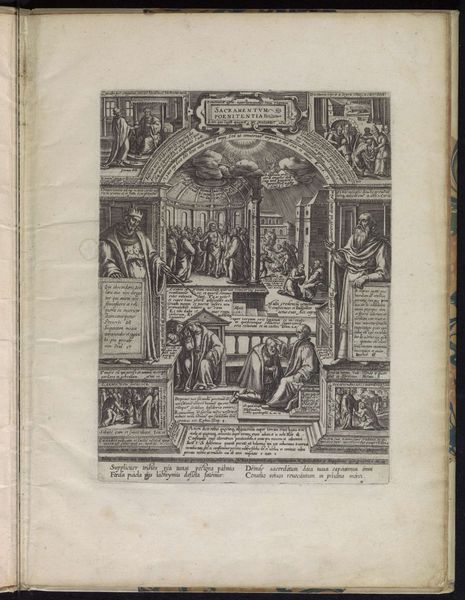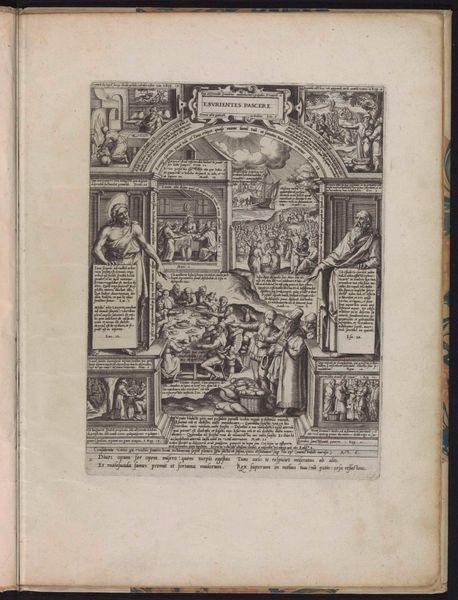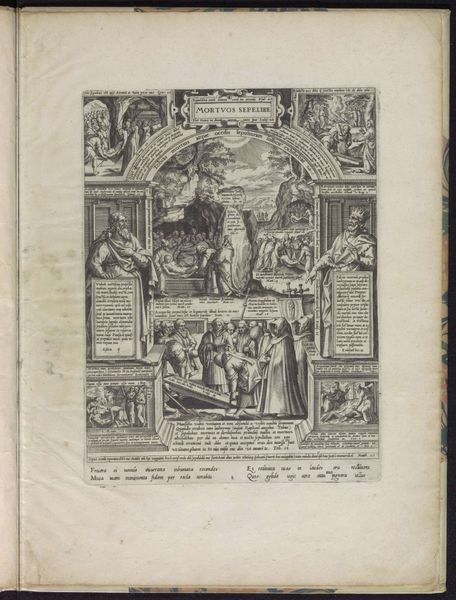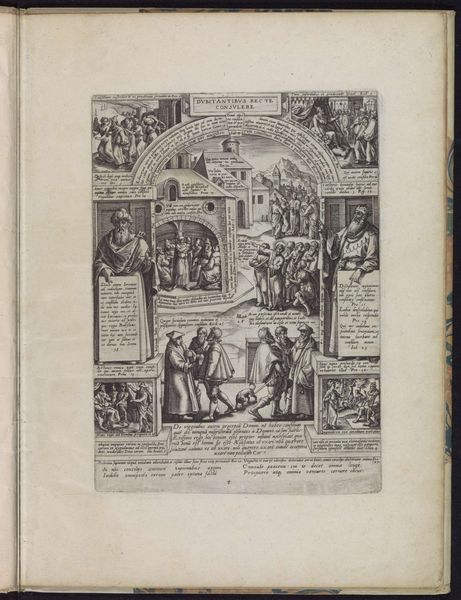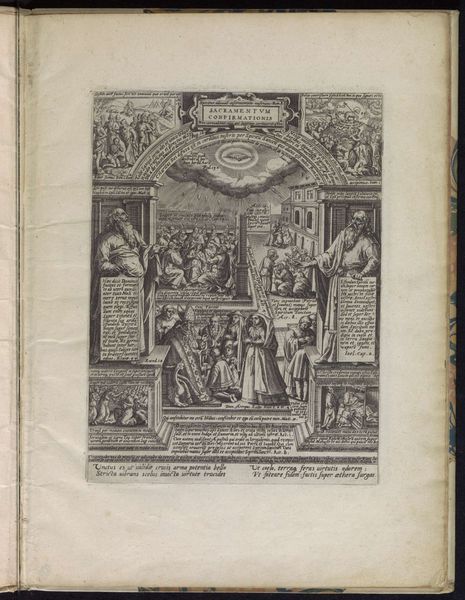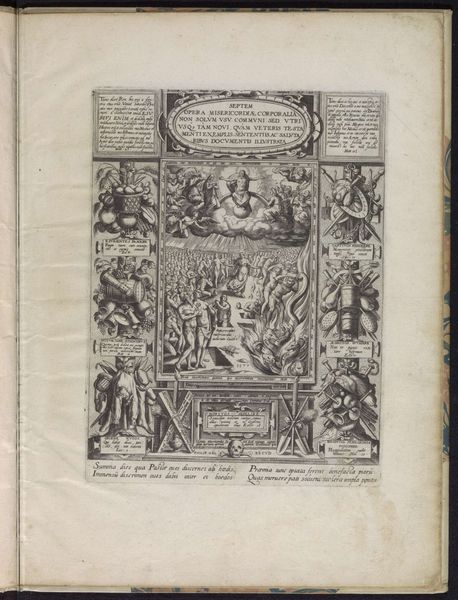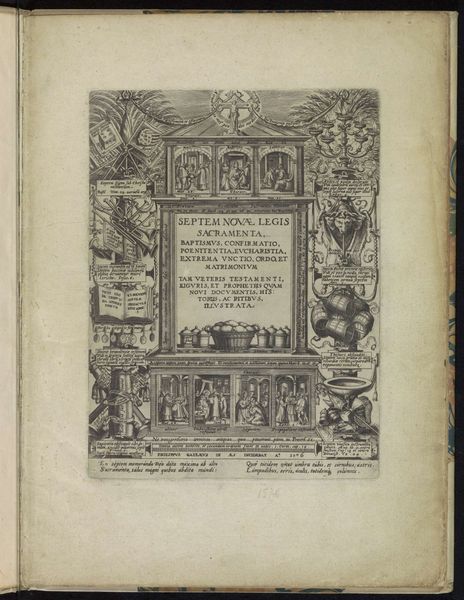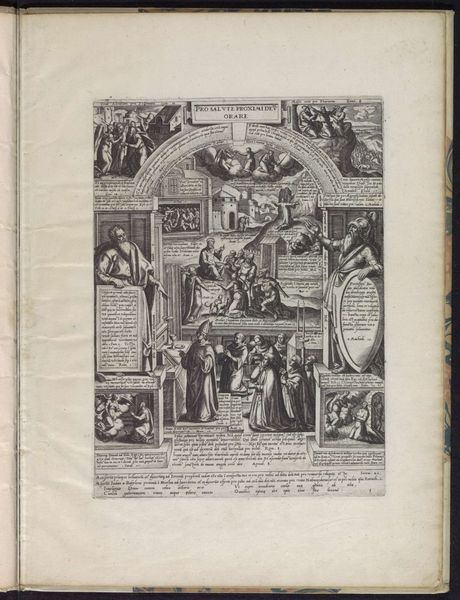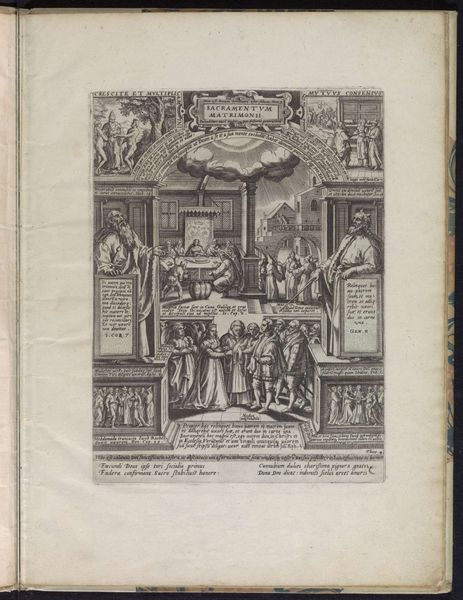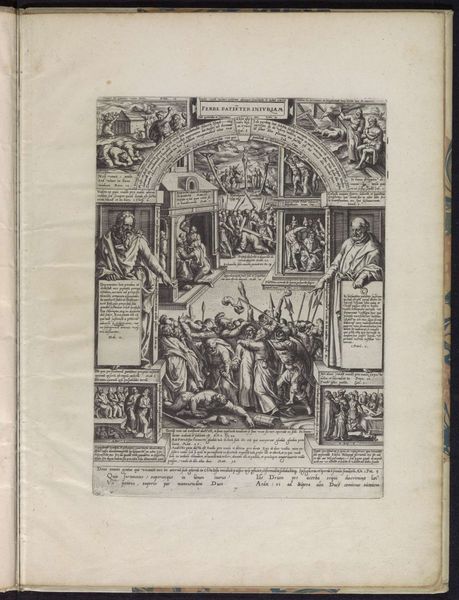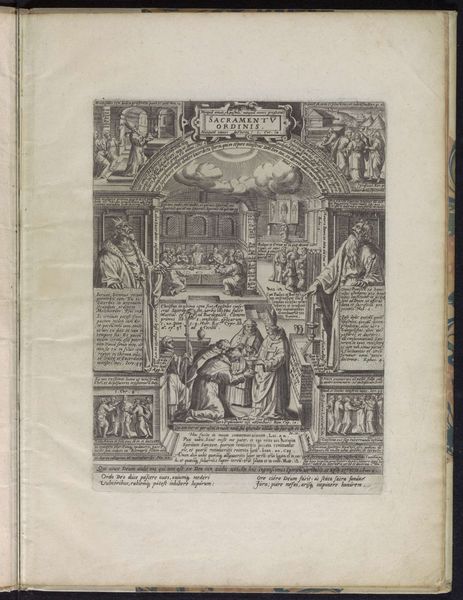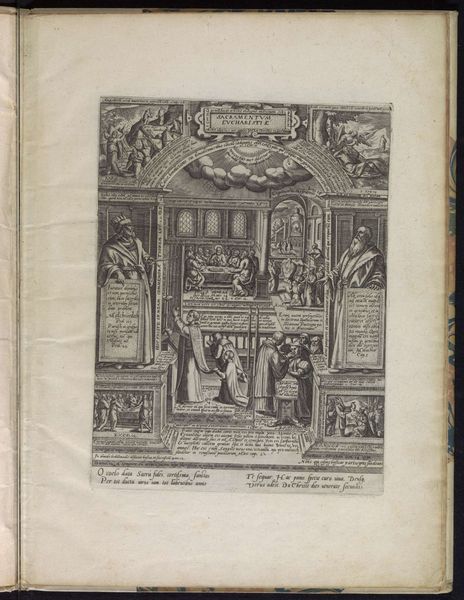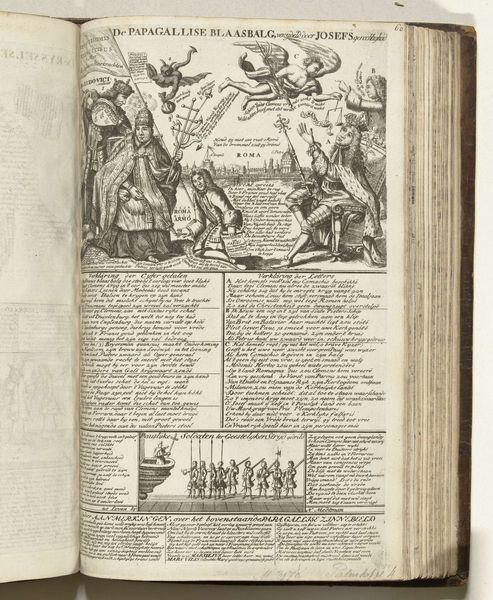
print, engraving
#
narrative-art
# print
#
coloured pencil
#
history-painting
#
northern-renaissance
#
engraving
Dimensions: height 260 mm, width 190 mm, height 375 mm, width 275 mm
Copyright: Rijks Museum: Open Domain
Philips Galle created this engraving, *Vermanen van zondaars*, around the late 16th century. It's made using a technique called etching, where lines are incised into a metal plate with acid, then filled with ink and printed. The precise lines and tonal gradations are a testament to Galle's skill. Look closely, and you can see how the act of mark-making directly informs the image's impact. The scenes depicted call for the repentance of sinners, which is a heavy subject, and the etching process, with its controlled yet forceful lines, mirrors this intensity. The printmaking medium itself speaks to the social context of the time. During the Reformation, printed images became powerful tools for disseminating ideas and moral messages. Galle's print participates in this broader movement, using the relatively accessible medium of print to reach a wide audience with its call for religious reform. It's a compelling reminder that even the most intricate works are always embedded in their material and historical circumstances.
Comments
No comments
Be the first to comment and join the conversation on the ultimate creative platform.
